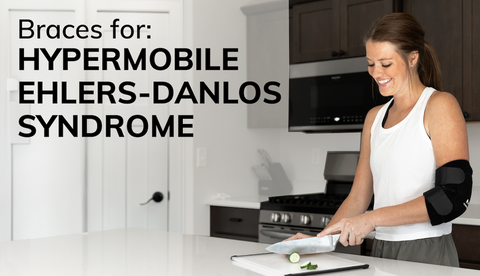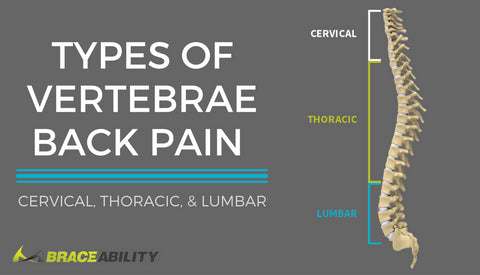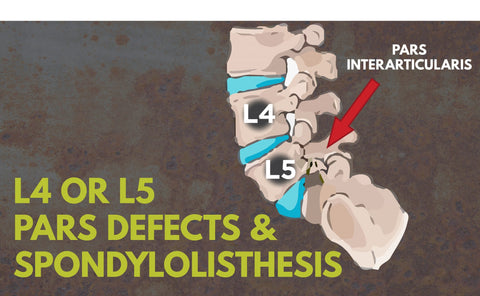6 Best Spondylolisthesis Exercises, and 3 To Avoid
Exercises for spondylolisthesis and spondylolysis are often incorporated into the treatment plan for these conditions for a number of reasons. For one, physical therapy focuses on strengthening and improving the range of motion of the back, abdomen and legs as this can help these other muscle groupings take on some of the strain that is normally placed on the spine. Spondylolysis treatment exercises can also be beneficial from a weight loss perspective, as excess pounds increase stress on the back.
Physical therapy for spondylolisthesis can also teach you less stressful ways of doing activities, such as lifting, getting dressed or even sitting for hours in front of a computer.
For instances where you have had surgery to repair a spondylolytic back, physical therapy exercises are a vital component of the healing process. It is amazing how quickly you can lose muscle strength and flexibility after such procedures.
During your healing process, you may want to wear a spondylolisthesis support brace to help immobilize your spine. Braces can help prevent you from twisting or bending your spine, which in turn, reduce the pressure that is placed on your spinal nerves.
Many exercises for degenerative spondylolysis or spondylolisthesis focus on stability; therefore, it should not be surprising that some who are looking to remedy unpleasant symptoms pursues yoga.
6 of the Best Spondylolisthesis Physical Therapy Exercises
Following are a few of the best exercises for spondylolisthesis treatment:
-
Pelvic tilt: Lie on your back with the knees bent and the feet flat against the floor. Pull your belly button toward the spine using your abdominal muscles and focus on pressing the low back flat against the floor. Hold this position for 10 to 15 seconds, and then relax. Do 10 repetitions of this exercise for spondylolisthesis in sets of three.
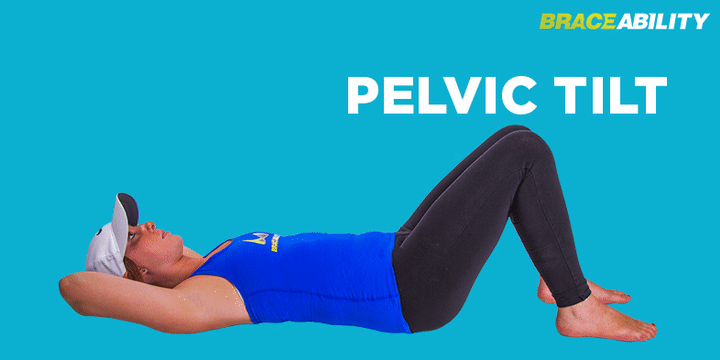
-
Dead bug: This spondylolisthesis exercise is a more advanced version of the pelvic tilt. You begin this exercise in the same fashion: on the back with the knees bent, feet flat against the floor and arms at your sides. Draw the belly button toward the spine as you tighten the abdomen. Keeping the legs bent, lift one of them off the floor and hold it for five seconds before lowering it to the ground and lifting the other leg for five seconds. Next, lift one arm over the head; hold it for five seconds then lower it. Repeat with the other arm. Once this becomes easy, you can double up, lifting a leg and the opposite arm at the same time. Repeat this sequence for five to ten repetitions in sets of three.
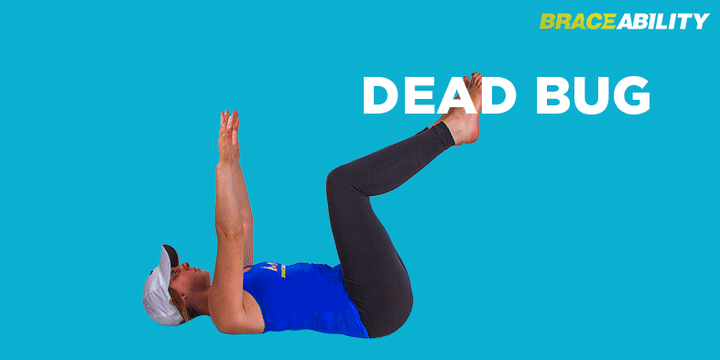
-
Partial curl: Begin this pose the same way as the pelvic tilt exercise. Tuck the chin to the chest and curl the upper body forward to lift the shoulders off the floor with your hands straight out in front of you. Hold this pose for three seconds before relaxing the abs and uncurling the upper back down to the floor. Breathing out can help you lift the shoulders off the floor. Repeat this exercise 10 times for three sets. To make this more difficult, you can clasp the hands behind the head with the elbows pointed out to the sides (like a crunch) as you perform this exercise.
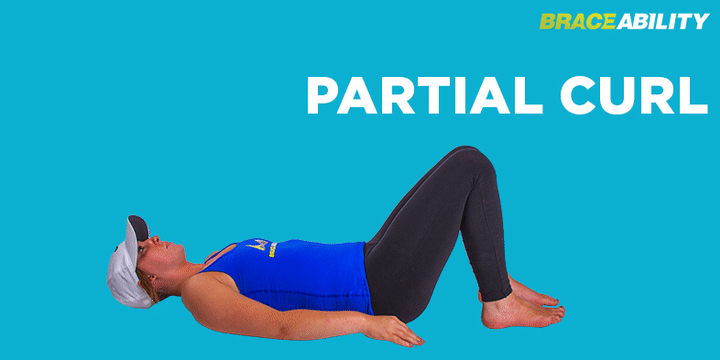
-
Gluteal stretch: Lie on the back with both knees bent. Rest the ankle of one leg against the knee of the other. Grab onto the thigh of the bottom leg and pull it toward the chest until you feel a stretch in the buttocks and possibly the outer part of the hip. Hold this pose for 15 to 30 seconds before switching legs. These stretches for spondylolisthesis should be repeated three times for each leg.
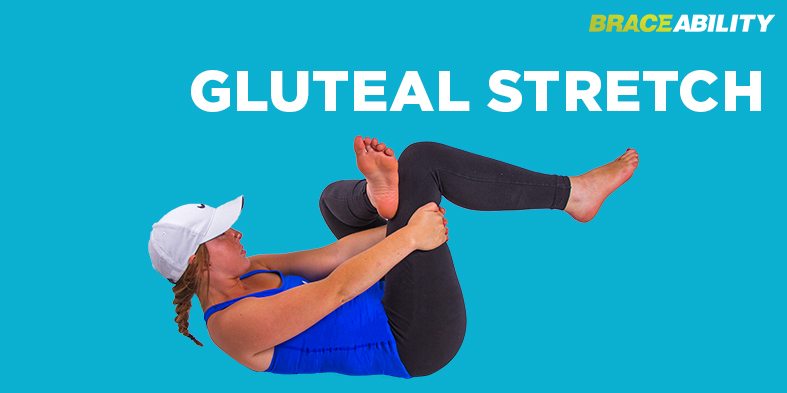
-
Double-knee to chest: This exercise is similar to the dead bug back exercise. Start with the knees bent and feet flat against the floor. Tighten the abdomen to push the low back against the floor and lift both legs off the ground and pull them to the chest. Hold this pose for five seconds then lower the legs back down to the ground. Repeat 10 to 20 times.
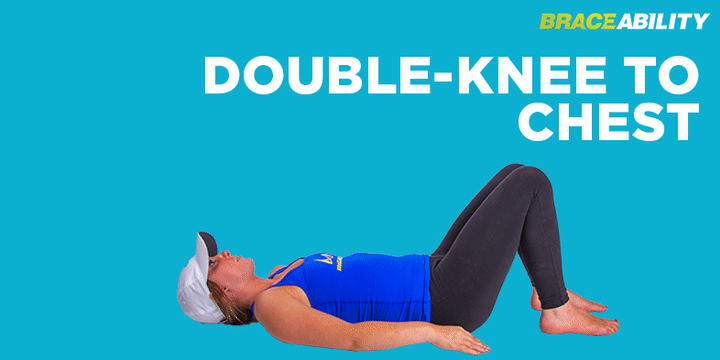
-
Quadruped arm/leg raises: For this back exercises for spondylolisthesis, begin on your hands and knees. Tighten the abdominals; while doing so, raise one arm and the opposite leg. Hold this pose for five seconds and then lower the leg and arm to the ground and repeat with the opposite arm and leg. Complete 10 repetitions on each side.
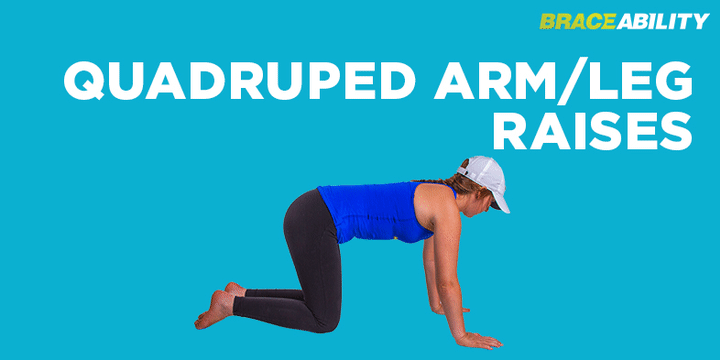
The exercises detailed above are aimed towards lumbar spondylolisthesis, since this is the most common location for spondylolisthesis to occur. And these are just a few of many stretches and exercises that can help. A doctor or therapist can help customize a regimen that features the best exercise for spondylolisthesis for your needs.
3 Exercises to Avoid With Spondylolisthesis
Since your spine can be very vulnerable while you’re suffering from spondylolisthesis, certain exercises may cause extra stress on the back. It’s important to speak with your doctor about your specific condition before further harming your back or spine. Here are three spondylolisthesis exercises to avoid:











